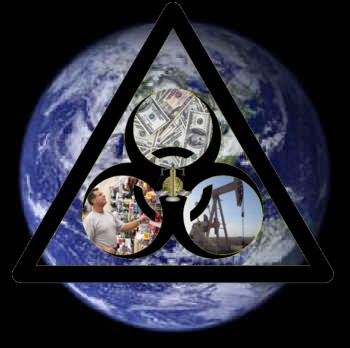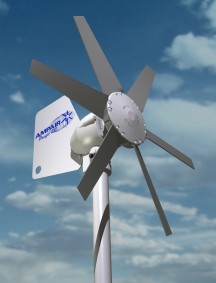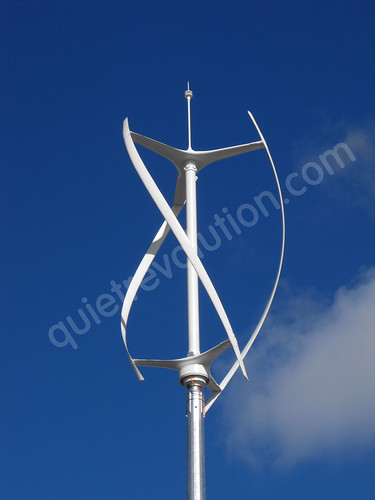This is fyi, I am gratefull about Germany’s understanding and willingness to direct their resources towards forest conservation. Let Holland turn its focus beyond fossil fuels as well and there is no way any calamity other than the ravages of climate change can damage the core of Europe.
UNCLAS SECTION 01 OF 02 BRASILIA 001565
SENSITIVE
SIPDIS
DEPT FOR OES/ENRC, OES/STC
E.O. 12958: N/A
TAGS: SENV KSCA KGHG BR GM
SUBJECT: GERMANY SEEKS TO EXPAND ITS SUBSTANIAL ASSISTANCE TO BRAZIL ON CLIMATE CHANGE AND COMBATING DEFORESTATION
REF: A) BRASILIA 1377, B) BRASILIA 1159
¶1. (U) THIS CABLE IS SENSITIVE BUT UNCLASSIFIED AND NOT FOR INTERNET DISTRIBUTION.
¶2. (SBU) SUMMARY. Germany has long been the leading contributor of financial and technical assistance to Brazil on deforestation and climate change. It is looking to expand its substantial program of technical assistance at the national and state levels with deforestation, and it also plans to increase its financial assistance with over 100 million Euros on climate change and renewable energy projects. END SUMMARY.
LONG THE LEADING CONTRIBUTOR
¶3. (SBU) Germany has long played the leading role in the international effort on conserving the Amazon forest. It was a major contributor to the G-7’s Pilot Program to Conserve the Brazilian Rainforest (PPG7), which was created by the Group of 7 in 1992 and is now winding up. According to Dr. Michael Grewe, Counselor for Technical and Financial Assistance of the German Embassy in Brasilia, the German assistance agency KFW as of September 2008 had contributed approximately 360 million Euros on sustainable forestry activities, protection of indigenous reservations, and land use planning and regulation. (REFTEL A) Further, Jen Ochtrop, the German Development Bank’s (KfW) Brazil Director of Programs for the Management of Natural Resources in an October 14 briefing for Embassy Science Officers outlined ambitious plans for future financial assistance. At that same briefing, the Dr. Helmut Eger, the Director of the German Technical Assistance Agency’s (GTZ) Program for the Protection and Sustainable Management of Tropical Forests, described expanding an already impressive technical assistance program.
¶4. (SBU) Germany would still be the leading contributor to Brazil in this area if Norway had not announced in September a one billion dollar pledge to the Amazonas Fund (REFTEL B). Germany is still studying that fund and has not decided whether it will also contribute or not. During the October meeting, Grewe and Ochtrop expressed concerns over the lack of controls and transparency
¶5. (SBU) Germany has established partnerships with the Ministry of the Environment, FUNAI (the Brazilian Indian Aid Agency), the Ministry of Agricultural, and the State of Amazonas. GTZ and KfW efforts focus on reducing deforestation and promoting sustainable development in the states of Amazonas and Acre. While Germany is looking to expand its impressive environmental efforts, it is no longer working with Brazil on projects to combat poverty. Grewe explained that this is because Germany has determined that Brazil, now a middle income country, has sufficient economic resources to carry out such activities on its own.
AMBITIOUS PLANS FOR THE FUTURE
¶6. (SBU) According to Ochtrop (KfW) and Egger (GTZ), Germany’s priority areas for Brazilian cooperation are: forest conservation and sustainable use; renewable energy and energy efficiency; sustainable development of natural resources with a focus on protected areas; demarcation and protection of indigenous lands; and land use planning and regional development. Germany is also working on capacity building with IBAMA (the Brazilian Institute of Environment and Renewable Natural Resources), the Chico Mendes Institute (which manages conservation areas), and the Brazilian Forest Service in the areas of knowledge management and capacity development. The majority of their capacity development work takes place in the State of Amazonas.
¶7. (SBU) Germany is heavily involved in projects with the Amazonas State Environmental Secretariat as well as other state government institutions in the states of Amazonas and Acre. Much of this activity has occurred since July 2008. Germany participates in land management projects such as the formalizing of land titles and ownership records. The Germans are looking for ways to support the introduction of programs for Reducing Emissions for Deforestation and Forest Degradation (REDD), especially in Amazonas State.
CLIMATE CHANGE
¶8. (SBU) KfW has started a new climate protection initiative that originated in the German environmental ministry. The German government has allocated approximately 400 million Euros for international climate change projects, which will come from the auction of emission rights under a carbon trading scheme. Of this total, 120 million Euros have been set aside for the initial round of projects, and 20 million Euros are being designated specifically for use in Brazil. 9. (SBU) Over the last two years the Germany has spent approximately 92 million Euros for climate related project. In regard to clean energy projects, Grewe told Science Officers that Germany plans to spend about 100 million Euros on wind energy in Brazil and 89 million Euros on a hydroelectric project. These will be implemented through the electric utilities Electrosul and Electrobras.
COMMENT
¶10. (SBU) Germany shares many of the USG’s concerns and interests regarding deforestation and climate change in Brazil. Germany has brought substantial financial and technical resources to help address these problems, and it plans to expand these efforts. Coordination of USG efforts with Germany and other contributors could offer opportunities to leverage our limited technical and financial resources in these critical areas.
END COMMENT.
KUBISKE
Second cable
VZCZCXRO6555
PP RUEHHM RUEHPB RUEHTM RUEHTRO
DE RUEHBR #0028/01 0081355
ZNY CCCCC ZZH
P 081355Z JAN 09 ZDK
FM AMEMBASSY BRASILIA
TO RUEHC/SECSTATE WASHDC PRIORITY 3261
INFO RUEHZN/ENVIRONMENT SCIENCE AND TECHNOLOGY COLLECTIVE
RUEHRG/AMCONSUL RECIFE 8893
RUEHRI/AMCONSUL RIO DE JANEIRO 7077
RUEHSO/AMCONSUL SAO PAULO 3318
C O N F I D E N T I A L SECTION 01 OF 03 BRASILIA 000028
C O R R E C T E D COPY – PARAGRAPHS RENUMBERED
SIPDIS
DEPT FOR OES/EGC – T.TALLEY AND D.NELSON
E.O. 12958: DECL: 01/08/2019
TAGS: SENV ENRG KGHG EAID EFIN BR
SUBJECT: WORKING WITH BRAZIL ON CLIMATE CHANGE – AN OPPORTUNITY
REF: (A) BRASILIA 1666 (B) BRASILIA 1159 BRASILIA 00000028 001.4 OF 003
Classified By: Deputy Chief of Mission Lisa Kubiske, Reason 1.4 (b) and (d)
¶1. (C) SUMMARY.
Brazil has a central role in the climate change arena, not only because it controls 70% of the Amazon rainforest, but also because it plays a pivotal role in the on-going UN Framework Convention on Climate Change (UNFCCC) negotiations. USG efforts to have India and China assume binding targets under the UNFCCC may hinge on the Government of Brazil (GOB),s position in these talks. For this reason, Mission Brazil suggests that the USG start an active campaign to allay the GOB,s concern about the effect that any eventual agreement will have on its ability to promote economic growth or about the possibility that a post-Kyoto agreement will expose them to potential trade sanctions or other punitive measures. Allaying the GOB,s concerns on this front will make it possible for the GOB to take a more helpful position in these negotiations.
¶2. (C) Now is a propitious time and the USG has the tools to shift the GOB toward a more helpful position in the UNFCCC negotiations. These tools include working with forward leaning state and local governments, facilitating technical assistance in forest management, and creating opportunities for more technology transfer. END SUMMARY.
BRAZIL IS KEY IN THE FIELD OF CLIMATE CHANGE
¶3. (SBU) Brazil has a dual importance in the field of climate change. First, massive deforestation has made Brazil, who has about 70 percent of the Amazon Forest in its territory, the fifth largest carbon emitter since 1950. For this reason, Brazil,s management of its tropical forests will have a marked impact on the climate.
¶4. (SBU) Second, the GOB has honed to an art the ability to block international negotiations when it disagrees with an outcome. Brazil,s potential spoiler role could undermine USG,s efforts to convince China and India (both non-Annex I countries to the UNFCCC) to take on emissions reductions targets. Brazil has strenuously opposed non-Annex I countries assuming reduction targets, citing the &common but differential responsibilities8 clause in the UNFCCC.
WHAT ARE BRAZIL,S PRIMARY INTERESTS?
¶5. (SBU) Growth, growth, growth. President Luiz Inacio Lula da Silva and his team have made economic growth the centerpiece of his second term (2006-2010). Lula wants to bring a modicum of economic prosperity to his base: the approximately 20 million people living in the Amazon region and the over 100 million more living in or near poverty in the rest of the country. A heightened emphasis on growth at the expense of environmental concerns was led to the departure in May 2008 of former Environment Minister Marina Silva (considered an inflexible, absolutist on key environmental issues) and her replacement by the more pragmatic Carols Minc. The GOB does not consider climate change an immediate threat to Brazil, and is not willing to sacrifice other priorities to address the problem.
¶6. (SBU) The GOB sees several areas of concern in the negotiations of the post-Kyoto framework. The GOB fears that there will be trade sanctions imposed on those countries that do not meet emissions reduction targets. They are worried that the Europeans would like to use a punitive regime to implement reductions. Moreover, they suspect that Europe (and to a lesser extent the United States) would use such trade sanctions as a non-tariff barrier to undermine Brazil and third world competitors. Since approximately 80 percent of Brazil,s emissions result from deforestation, Brazil would need to have confidence that it could adequately control the rate of clearing before it could agree to binding international targets. The jump in deforestation figures for the 2007/2008 period shows that the government,s grip over the Amazon remains weak (REFTEL A).
¶7. (SBU) The GOB is also concerned by proposals for a sectoral approach. GOB officials believe the sectoral approach could lead to significant constraints on the Brazilian economy. Here again the GOB sees the hidden hand of competitors in the developed world, where the mature industries are looking for ways to impede the rise of new competitors in the developing world. BRASILIA 00000028 002.4 OF 003
¶8. (SBU) Brazil has looked favorably on other aspects of the climate change discussions that either do not threaten or could even boost economic growth. Thus, the GOB presses hard for technology transfer and financial assistance to the developing world. It also has promoted its Amazonas Fund, where international contributors provide Brazil with funding ) but with no strings or oversight ) to help conserve the Amazon Forest (REFTEL B).
THREE POSSIBLE SCENARIOS
¶9. (C) Brazil could take one of three approaches to the ongoing UNFCCC negotiations: – The Spoiler: This is GOB,s current approach, which is to seek to prevent developing countries from assuming binding international obligations. – The Passive Partner: The GOB is willing to have China and India assume binding obligations, but does not use its influence to accomplish this end. – The Active Ally: The GOB works with the USG to establish mechanisms to constrain emissions by developing countries. While it would be ideal to have the GOB working side-by-side with the USG in the international negotiations on a post-Kyoto agreement, it is more important that the GOB does not block a deal satisfactory to the USG.
FIRST A REASSURING CAMPAIGN
¶10. (C) A critical element for changing the GOB,s approach to the negotiations is convincing them that the new regime, whether through overall emissions targets or by sectoral means, will not impede the GOB,s drive to expand the economy. The USG and Europeans should launch a campaign in Washington, Brasilia, and in European capitals (to the Brazilians) to convince the GOB of this important point. The USG should also reach out to other stakeholders such as state and local governments, civil society groups, and opinion makers who can help allay the fears of the federal government.
THE TIME IS RIGHT FOR COOPERATION
¶11. (C) With adequate assurances over their prospective economic growth, we are at a propitious time move the GOB to a Passive Partner or even an Active Ally role in these negotiations. Minister Minc has signaled willingness for Brazil to take a more ambitious approach toward climate change. Minc is close to the President,s powerful Chief of Staff, Dilma Rousseff, which could enhance his ability to influence the results of inter-ministerial debate. At the same time, Under Secretary for Political Affairs Everton Vargas (who has the lead within the Ministry of External Relations (MRE) on climate change) is expected to leave in February 2009 to become the Brazilian Ambassador in Germany. Under Secretary Andre Amado is taking over climate change negotiations for the MRE. This change may provide the USG with a greater opportunity to influence the GOB position in the upcoming UNFCCC negotiations. This opportunity is particularly important because the MRE, rather than the Ministry of the Environment (MMA), has retained the dominant role within the GOB on these negotiations.
¶12. (C) Equally important is the divide between the more forward leaning state governors of the Amazon region and the federal government. The governors have been working on climate change and environmental initiatives that are more aggressive than those of the federal government. Their efforts demonstrate a growing sentiment within Brazil that more can be done to combat climate change. These governors could be potential partners with the USG in efforts to influence the GOB’s position.
SUGGESTED ACTION PLAN
¶13. (C) USG and other developed nations have several tools at their disposal to encourage the GOB to adopt a more helpful approach in these negotiations. The USG should help to the GOB to address its economic concerns by providing technology transfers/sharing (such as with energy efficiency, clean energy, or biofuels); and financial assistance. The USG could start by building on existing mechanisms, such as the 2007 biofuels MOU, but the USG should also look for new opportunities to continue and expand these endeavors.
¶14. (C) The USG should simultaneously take action to persuade influential players in Brazil,s elite circles to weigh in for a more constructive approach. These players include state government leaders, national legislators, the business community, Non-Governmental Organizations, opinion leaders, and prominent scientists. This outreach could be accomplished through existing ties (such as those that the Mission has developed with the governors of the nine states in the Amazon region); building relationships between Brazilian legislators, scientists, and business leaders and their US counterparts; promoting and facilitating exchanges between Brazilian and US experts; and increasing contact and communication with opinion leaders and Brazilian NGOs with a focus on the compatibility of US and GOB interests in climate change negotiations.
¶15. (C) The USG should also leverage its technical, scientific, and economic resources to help the GOB tackle its deforestation problem. This could be accomplished by facilitating technical exchanges with the U.S. Forest Service, the National Park Service, the U.S. Fish and Wildlife Service, and the Bureau of Land Management with an aim of helping strengthen Brazil,s ability at the national, state and local levels to manage better its forests in a sustainable manner. The US could also provide financial assistance and scientific and economic analysis to help the GOB better understand current trends in deforestation and the likely impact of any policy changes.
¶16. (C) Finally, the USG should continue to promote state and municipal activities to reduce deforestation. Helping these governments could produce positive results that could be replicated elsewhere in the region. SOBEL
Still more here.
































